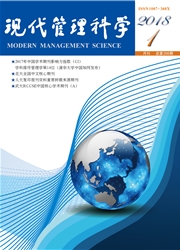

 中文摘要:
中文摘要:
在关于定义和在中国的住房水泡的测量的出版文学有某争论。扩大黑等的分析框架。(2006 ) ,现在的论文从 1999 的第二季度测量中国的 35 个主要城市的住房水泡到 2010 的第二季度。结果显示中国的 35 个主要城市里的住房水泡在样品间隔是相对小的,但是自从 2005,在东方宗主国的水泡例如北京,上海,深圳, Hangzhou 和 Ningbo,相对大。大多数城市里的住房水泡的变化趋势高度在房地产政策与变化相应。这篇论文分解 35 个城市的住房水泡,并且发现荒谬的水泡而非价格推测产生的合理内在的水泡的一个大比例。基于实验分析,这份报纸为阻止住房水泡的产生和扩大建议政策建议。
 英文摘要:
英文摘要:
There is some disagreement in the published literature regarding the definition and the measurement of housing bubbles in China. Extending the analytical framework of Black et al. (2006), the present paper measures the housing bubbles of China's 35 major cities from the second quarter of 1999 to the second quarter of 2010. The results indicate that the housing bubbles in China's 35 major cities were relatively small in the sample interval, but the bubbles in eastern metropolises, such as Beijing, Shanghai, Shenzhen, Hangzhou and Ningbo, have been relatively big since 2005. The changing tendency of housing bubbles in most cities highly corresponds with the changes in real estate policies. This paper decomposes the housing bubbles of the 35 cities, and finds a great proportion of irrational bubbles rather than rational intrinsic bubbles generated by price speculation. Based on empirical analysis, this paper proposes policy recommendations for preventing the generation and expansion of housing bubbles.
 同期刊论文项目
同期刊论文项目
 同项目期刊论文
同项目期刊论文
 期刊信息
期刊信息
